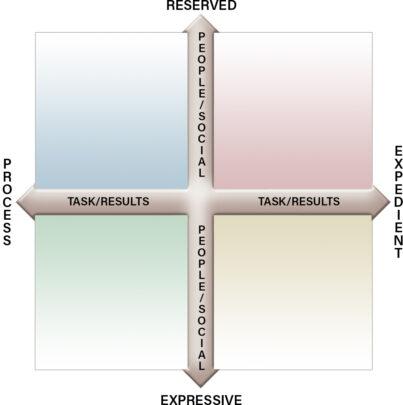
There are four, basic, common, cross-cultural patterns of behavior that can be broken down on a grid with two dimensions. One dimension expresses how you tend to go about completing tasks and the other reflects how you tend to interact with others. It’s a very simple model but extremely helpful when it comes to recognizing how these patterns can impact each other. When we think of these patterns as being primarily about our personality, it means this is who you are, which would be the end of the story. But when we think of them as patterns of behavior, it means this is how you tend, or prefer, to behave, which is quite a different story. We call these patterns Behavior Style and it’s where we focus our work.
What we’ve learned in over 40 years of research with hundreds of thousands of people and organizations from around the world is that these patterns of behavior are more dynamic than static. Even though there are preferences, they are generally less about who you are and more about what you do. Most people do at least two if not three of the four patterns relatively easily. This is where an important difference manifests between “personality type” and Behavior Style.
Again, we don’t change who we are but nearly everyone can and does change what they do. It’s about making a better impact. If you want to learn all about yourself, we encourage and support that effort. But since it’s your behavior that impacts others, it’s equally important to understand that part of you as well.
People who are easy to be around and who build trust and respect quickly are usually those who not only understand and appreciate the different patterns of behavior but who also know how to change their behavior enough situationally to make a better impact. This speaks to the skill aspect of Behavior Styles.
We’ve found that most people are much more interested in becoming aware of and learning about their Behavior Style preference than the Behavior Styles of others. Although this is natural, it’s unfortunate because, at the end of the day, our ability to recognize the pattern of behavior in others in real time (because behavior can quickly change) is the most important part of Behavior Style awareness and knowledge. It’s the skill of knowing how to flex or modify behavior to make a more positive impact that goes a long way towards creating effective relationships, teams, and organizations.
With our assessments and workshops, we don’t go into a lot of detail about who you are. We try to provide just enough information about that so you recognize your Behavior Style preference. But the most important reason to learn the model and the four patterns of behavior is so you can build the skill of knowing how and when to modify your behavior situationally—even if only for a few seconds—to make a more positive, productive impact. It takes awareness and some effort, but little things done well over time with the intent of building trust and respect make a big impact.
